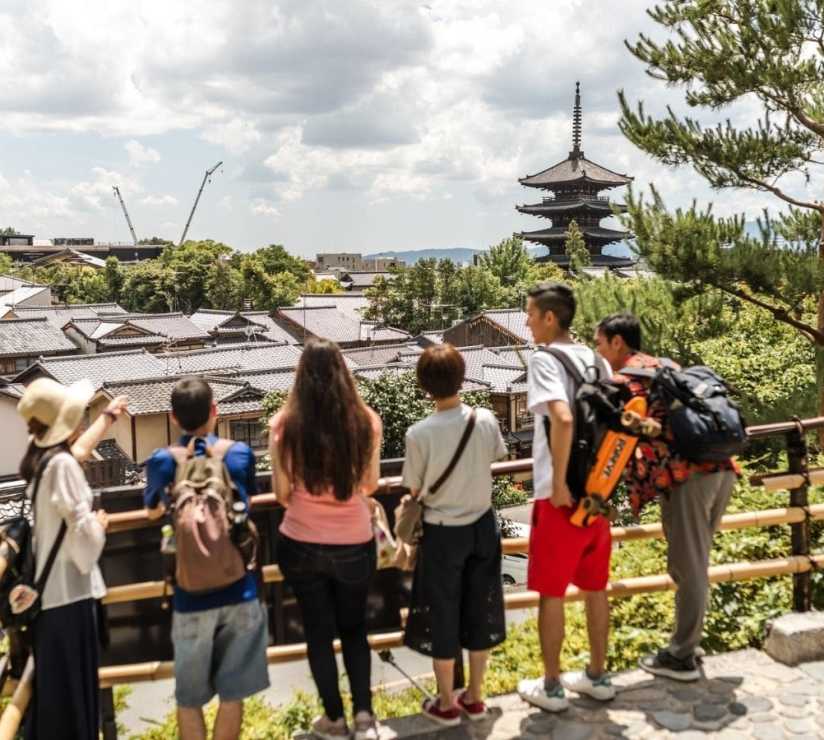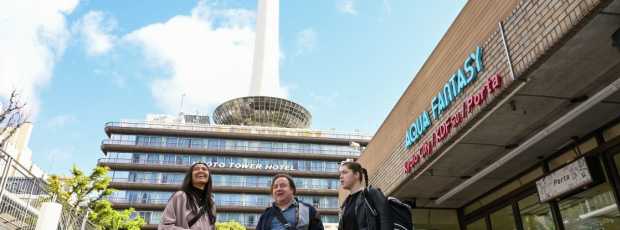Table Of Contents
- Getting to Kyoto Japan: Transportation Essentials
- Day One Morning: Sacred Spaces and UNESCO Heritage
- Day One Afternoon: Gion District and Cultural Immersion
- Day One Evening: Local Dining Culture
- Day Two Morning: Golden Pavilion and Forest Temples
- Day Two Afternoon: Arashiyama and Bamboo Forest Experience
- Planning Your 2 Days in Kyoto: Practical Information
- Essential Kyoto Etiquette
- Reflecting on Two Days in Kyoto

A beautifully arranged overview map showing the connection between Fushimi Inari, Gion district, and temple locations with suggested routes
Is 2 days in Kyoto enough? The question finds me regularly in coffee shops around Gion, usually from travelers clutching guidebooks thick with red-circled destinations. Visiting Kyoto for just two days won't let you see everything, this city has been layering stories for over a thousand years. But visiting Kyoto for two days can introduce you to the particular rhythm that makes Kyoto, Japan so compelling, the way light moves differently here, how silence holds weight.
What I've learned from watching visitors and from my rediscovery walks, is that 2 days in Kyoto works best when you resist the urge to collect temples like stamps. Instead, let each place teach you something about paying attention. Let me show you how I'd spend two days here if I were seeing it fresh, with eyes that notice both the famous and the fleeting.
Crafting Your Perfect 2 Day Kyoto Itinerary
A well-planned 2-day Kyoto itinerary should balance iconic sites with intimate discoveries, which is why Fushimi Inari Taisha Shrine serves as an ideal starting point, its thousands of red gates leading up the mountainside offer both a physical and spiritual journey.
Your 2-day Kyoto itinerary gains depth when you contrast Fushimi Inari Taisha Shrine's dynamic hiking experience with the contemplative, serene gardens at Kodaiji Temple, where autumn illuminations create magical evening atmospheres. The walking route from Fushimi Inari Taisha Shrine to central Kyoto, Japan, naturally leads through historic streets that connect sacred and secular experiences seamlessly.
Evening plans in any 2-day Kyoto itinerary should include Hanamikoji Street in Gion, where historic streets lined with traditional architecture house both kaiseki dining establishments and casual tea houses. The proximity of Kodaiji Temple to Hanamikoji Street makes this combination particularly effective, you can explore serene gardens during late afternoon golden hour, then transition to kaiseki dining that represents centuries of refined culinary tradition. This 2-day Kyoto itinerary approach ensures that spiritual experiences enhance rather than compete with cultural and culinary discoveries.
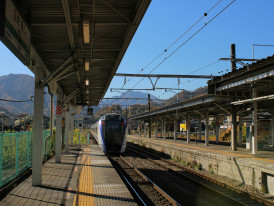
A bullet train arriving at Kyoto Station with Mount Fuji visible in the distance Photo by Dhruv Patel on Unsplash
Getting to Kyoto Japan: Transportation Essentials
Before diving into visiting Kyoto, understanding arrival logistics shapes your entire experience. The bullet train from Tokyo reaches Kyoto, in just over two hours, delivering you directly to the modern train station that serves as the city's transportation hub. If you're traveling extensively through Japan, the Japan Rail Pass provides exceptional value, covering not just the bullet train to Kyoto, Japan, but also local transportation throughout your stay.
Kyoto Station itself deserves recognition as an architectural achievement, this glass and steel complex contrasts dramatically with the traditional city it serves, creating your first lesson in how Kyoto, Japan, balances preservation with progress. The train station contains restaurants, shops, and tourist information centers that can orient you before venturing into historic districts.
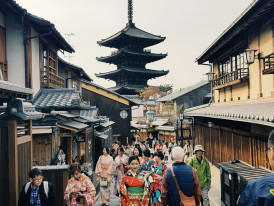
Traditional wooden buildings lining the historic Sannen-zaka street with visitors in kimono walking uphill Photo by Kevin Anggrek on Unsplash
Day One Morning: Sacred Spaces and UNESCO Heritage
Understanding Kyoto's Temple Appeal
When people visit Japan for the first time, Kiyomizu-dera Temple consistently ranks as a popular tourist destination that exceeds expectations. The approach through traditional shops on Sannen-zaka and Ninnen-zaka creates anticipation before reaching this architectural marvel. While Kiyomizu-dera Temple draws crowds, the experience rewards patience, especially when morning light illuminates the wooden architecture against city views below.
Where to Start Your 2-Day Kyoto Journey?
Fushimi Inari Shrine demands your first morning, not just for its famous thousand torii gates, but for how it introduces you to Kyoto, relationship with the sacred. Most visitors photograph the entrance tunnels and turn back. Walk further. The mountain holds dozens of smaller shrines, each marking someone's answered prayer or persistent hope.
The climb takes forty minutes to the summit, but every ten minutes offers different views of Kyoto, Japan, spreading below. Morning light makes the red gates glow like embers, and the forest smells of cedar and incense.
Notice the fox statues, messengers of Inari, the rice deity. Visitors leave offerings: coins, small bottles of sake, even written wishes. This isn't museum worship; it's living practice. The distinction matters for understanding how 2 days in Kyoto can shift from sightseeing to witnessing.
Understanding Kiyomizu-dera Temple
Kiyomizu-dera Temple, a designated UNESCO World Heritage site, anchors your morning's second half. The wooden platform jutting from the main hall offers the view everyone knows from postcards, but the temple's power lies in its approach through traditional streets, Ninnen-zaka and Sannen-zaka, that pulse with the energy of pilgrimage paths used for centuries.
Kiyomizu-dera's main hall was built without using a single nail, traditional Japanese joinery holding tons of wood through centuries of earthquakes and weather. This UNESCO World Heritage site demonstrates the architectural mastery that earned Kyoto, recognition for outstanding universal value.
The temple's name means "pure water," referring to the Otowa Waterfall flowing beneath the main hall. Visitors line up to drink from three streams, each said to grant different wishes: longevity, success in studies, or luck in love. Choose only one stream, tradition warns that drinking from multiple sources dilutes their power.
Looking for a private city experience in Kyoto?
Explore the city with a local who plans a private day just for you; no groups, no scripts.
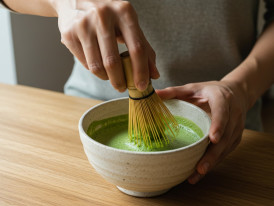
Hands whisking matcha tea in a ceramic bowl with focused concentration
Day One Afternoon: Gion District and Cultural Immersion
Exploring Traditional Streets and Yasaka Pagoda
Central Kyoto connects historic districts through traditional streets that have maintained their character despite modern pressures. The approach to Yasaka Pagoda winds through traditional streets lined with wooden buildings housing craft shops, restaurants, and galleries. The five-story Yasaka Pagoda, dating from the 6th century, serves as a landmark visible throughout the Higashiyama district.
Traditional streets like Ishibei-koji create pedestrian experiences impossible in modern cities. Stone-paved surfaces, wooden architecture, and human-scale proportions slow your pace naturally. These traditional streets demonstrate how Kyoto, preserves urban environments that promote walking, conversation, and casual discovery.
Discovering Beyond the Crowds
While exploring the beautiful streets around Yasaka Pagoda, I've discovered that Hokan-ji Temple serves as a hidden gem that most visitors overlook despite its proximity to popular attractions. This hidden gem requires no entrance fee and offers intimate encounters with beautiful temples architecture without tourist crowds. Hokan-ji Temple represents the kind of hidden gem discoveries that reward curious wanderers, beautiful shrines and temple grounds that locals visit a few times throughout the year for quiet contemplation. The surrounding souvenir shops cater more to neighborhood residents than tourists, selling practical items alongside traditional crafts.
I've returned to Hokan-ji Temple a few times myself, always finding new details in its beautiful temples design, and a few times I've encountered elderly locals offering directions to other beautiful shrines in the area. The souvenir shops nearby maintain authentic character, avoiding the commercialized displays found near major beautiful temples elsewhere in Kyoto Japan.
Gion requires delicate navigation. This isn't a theme park despite what camera-wielding crowds might suggest. Real geishas (called geiko in Kyoto, Japan) live and work here, often hurrying to appointments in tea houses you'll never see inside. Respect means keeping distance, not pursuing photos, letting glimpses remain glimpses.
Tea Ceremony and Traditional Culture
Your afternoon shifts from monuments to practices, from observing to participating. Traditional tea ceremony offers the most accessible entry point into Japanese cultural philosophy. Ju-an Tea House in Gion offers intimate sessions where you learn not just how to whisk matcha, but why each movement matters.
The ceremony unfolds as meditation, every gesture designed to create presence, to transform simple tea drinking into a practice of attention. The bitter-sweet taste of properly prepared matcha shocks newcomers, but they persist. The flavor teaches patience, rewards slow sipping, creates space for conversation that moves at thoughtful pace.
Exploring Buddhist Temples and Market Culture
After your tea ceremony experience, consider joining a walking tour that connects Kyoto Japan's spiritual and commercial heritage. Many walking tour guides lead visitors from Buddhist temple complexes to Nishiki Market, demonstrating how sacred and secular life interweave in central Kyoto. A typical walking tour might begin at a Buddhist temple featuring a traditional Zen rock garden, These carefully composed stone and gravel landscapes create meditation spaces where you can practice the attention skills learned during a tea ceremony. The Zen rock garden at nearby temples offers perfect transition from cultural activities to market exploration.
Nishiki Market, known as "Kyoto's Kitchen," spans four centuries of continuous operation, making it an ideal walking tour destination that reveals local food culture. Nishiki Market vendors serve specialties unavailable elsewhere, handmade tofu, traditional pickles, and seasonal sweets that reflect Kyoto, Japan's culinary traditions.
The market's proximity to multiple Buddhist temple sites creates a natural route for exploring how religious and daily life connect. Nishiki Market shopping provides practical cultural education, learning ingredient names, tasting regional specialties, and observing how Kyoto, Japan, residents select daily provisions. This Buddhist temple and Nishiki Market combination offers a comprehensive afternoon that balances contemplation with cultural immersion.

Traditional performing arts taking place in a contemporary Kyoto venue with audience engagement Photo by Arthur Tseng on Unsplash
Day One Evening: Local Dining Culture
Where Locals Actually Eat
Evening dining in Kyoto, divides between tourist experiences and local life, with the most memorable meals often happening in the smallest spaces. Central Kyoto's dining scene reflects the city's position as former Japan's capital, where imperial court traditions influence contemporary restaurant culture.
Unlike coastal cities where fresh seafood dominates menus, Kyoto, Japan, emphasizes seasonal vegetables, traditional preparation methods, and presentation that treats each meal as an aesthetic experience. Fresh seafood appears in Kyoto restaurants through careful sourcing from nearby Osaka Bay, but visiting Kyoto for seafood misses the city's culinary strengths, ,tofu cuisine, seasonal vegetable preparations, and traditional sweets.
Traditional teahouses throughout central Kyoto offer dining experiences that connect contemporary meals to historical court culture. These establishments serve kaiseki meals that follow seasonal rhythms, using ingredients and presentation styles developed when Kyoto hosted imperial ceremonies.
Evening Entertainment and Fun Night Options
Visiting Kyoto doesn't end with temple closing times. Central Kyoto transforms after dark, offering nightlife that ranges from traditional entertainment to contemporary culture. A fun night in Kyoto Japan might include sake tasting in traditional teahouses, live music in converted machiya buildings, or simply walking illuminated traditional streets where lantern light creates a magical atmosphere.
Pontocho Alley provides central Kyoto's most atmospheric evening destination, where narrow passages fill with restaurant activity and social energy. A fun night here involves moving between different establishments, starting with drinks in traditional settings, ending with live music or cultural performances.
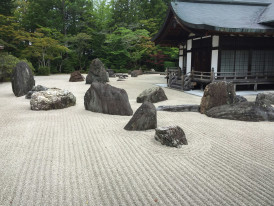
The famous rock garden at Ryoan-ji temple with 15 stones arranged in raked gravel Photo by Ray Wyman Jr on Unsplash
Day Two Morning: Golden Pavilion and Forest Temples
Kinkaku-ji: Understanding Gold and Gardens
Kinkaku-ji (Golden Pavilion), another UNESCO World Heritage site, anchors your second morning with architecture that seems almost too perfect for reality. This three-story structure, covered in gold leaf, creates mirror reflections in surrounding pond waters that shift with light and weather conditions.
Arrive early, not just for smaller crowds but for light quality that makes gold leaf glow rather than glare. Morning mist sometimes clings to surrounding forest, creating atmosphere that photography rarely captures adequately. The scene demands presence rather than documentation.
The temple's formal name, Rokuon-ji, honors its original purpose as a retirement villa for shogun Ashikaga Yoshimitsu. The building represents different architectural styles on each floor, embodying cultural synthesis rather than single tradition. This layering characterizes much of Kyoto Japan's appeal: complexity disguised as simplicity.
Ryoan-ji's Famous Rock Garden
Ryoan-ji Temple houses Japan's most famous rock garden, fifteen stones arranged in raked gravel within a rectangular space. The composition appears simple until you try counting stones from any single viewpoint. The arrangement ensures you never see all fifteen simultaneously.
This optical impossibility creates a meditation opportunity. Sit on the wooden viewing platform. Let your eyes move naturally around the composition. Notice how attention shifts, how the mind tries to solve the counting problem, how eventually you might stop counting and simply observe.
Visitors sitting in contemplation viewing the Ryoan-ji rock garden from the wooden platform
What if your day in Kyoto was planned by someone who knows it — and you?
City Unscripted matches you with a local host who creates a private experience based on your interests, not a set route.
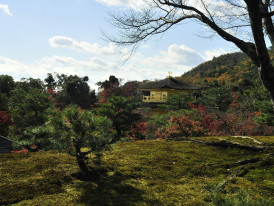
The garden at Tenryu-ji temple incorporating distant mountains into the designed landscape Photo by Boudewijn Huysmans on Unsplash
Day Two Afternoon: Arashiyama and Bamboo Forest Experience
Exploring the Arashiyama Bamboo Forest
Arashiyama's Bamboo Grove attracts massive crowds for obvious reasons—thousands of bamboo stalks create natural cathedral with light filtering through dense canopy. The bamboo forest generates sounds like ocean waves or distant applause as stalks sway in mountain breezes. This Arashiyama bamboo forest represents one of Kyoto Japan's most photographed destinations, but the experience transcends visual impact.
Walking through the bamboo forest in the morning or late afternoon reveals why this Arashiyama bamboo forest has inspired poets and artists for centuries. The acoustic environment shifts constantly, sometimes cathedral-quiet, other moments filled with bamboo percussion as wind moves through thousands of hollow stalks.
Bamboo forest photography requires specific techniques due to unique lighting conditions created by dense canopy cover. The Arashiyama bamboo forest offers multiple walking routes through bamboo forest sections, each providing different perspectives on how these environments create natural architecture through living materials.
Visiting Kyoto during different seasons reveals how bamboo forest environments change character, spring growth creates dense green walls, while winter reveals underlying structural patterns. The bamboo forest remains accessible year-round, making it reliable element in any 2 days in Kyoto itinerary.
Arashiyama Monkey Park: Mountain Views and Wildlife
The Arashiyama Monkey Park provides completely different perspective on visiting Kyoto, literally and figuratively. Located atop Mount Iwata, this monkey park requires twenty-minute uphill hike but rewards effort with panoramic views of Kyoto Japan spreading across valley floors and surrounding mountains.
Arashiyama Monkey Park houses over 120 Japanese macaques who roam freely throughout mountain forest. Unlike zoo environments, this monkey park lets you observe natural primate behavior while enjoying some of the best views in Kyoto Japan. The Arashiyama monkey park experience combines wildlife observation with scenic overlook, creating unique addition to any 2 days in Kyoto itinerary.
The viewing pavilion at monkey park offers refreshments while you watch macaque social interactions. Arashiyama monkey park demonstrates how visiting Kyoto can include natural experiences alongside cultural sites. The monkey park stay typically lasts 45-60 minutes, perfect for mid-afternoon break during temple-heavy itineraries.
Tenryu-ji Temple and Borrowed Scenery
Tenryu-ji Temple, another UNESCO World Heritage site, features a garden design that incorporates the surrounding mountains into composed landscapes, a "borrowed scenery" technique that makes the temple grounds appear infinitely larger. This UNESCO World Heritage site demonstrates how Kyoto Japan earned recognition for outstanding universal value through innovative landscape architecture.
The temple garden shows how human design can enhance rather than compete with natural beauty. Views carefully frame distant mountains, creating compositions that change with seasons and weather. This integration of natural and designed elements characterizes the best of Kyoto Japan's temple architecture.
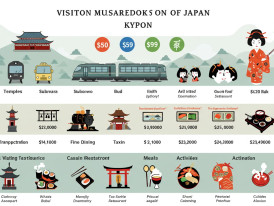
A breakdown chart showing typical costs for temples, transportation, meals, and activities in Kyoto
Planning Your 2 Days in Kyoto: Practical Information
Accommodation: Traditional Japanese Inns vs Modern Hotels
Traditional Japanese inns (ryokan) offer cultural immersion that transforms visiting Kyoto from sightseeing to a lifestyle experience. These traditional Japanese inns maintain architectural and service traditions dating back centuries, providing opportunities to sleep on tatami mats, bathe in mineral-rich hot springs, and participate in formal meal presentations.
Staying in traditional Japanese inns requires cultural adaptation, removing shoes indoors, sleeping on floor mattresses, and sharing bathroom facilities in budget options. However, these establishments create authentic encounters with Japanese hospitality that hotel stays cannot replicate.
Central Kyoto offers accommodation ranging from luxury ryokan charging ¥50,000 per night to modest family-run inns accepting budget travelers. Location within central Kyoto provides walking access to major temples and traditional streets, eliminating transportation concerns.
Understanding UNESCO World Heritage Sites
Kyoto,Japan, contains seventeen properties designated as UNESCO World Heritage sites, representing the largest concentration of protected cultural monuments in any single city worldwide. These UNESCO World Heritage sites include famous temples like Kinkaku-ji and Ginkaku-ji, as well as lesser-known religious complexes that demonstrate Kyoto Japan's historical importance.
Visiting Kyoto means encountering UNESCO World Heritage sites throughout your journey, often without realizing their international significance. Each UNESCO World Heritage site meets strict criteria for outstanding universal value, representing architectural achievements that shaped human civilization.
Understanding UNESCO World Heritage site status enhances appreciation for what you're experiencing during 2 days in Kyoto. Each protected temple represents not just local cultural value but global human heritage deserving preservation for future generations.
Transportation Strategy
Public transportation in Kyoto requires strategic thinking rather than random navigation. One-day bus passes (¥600) provide unlimited rides on most routes connecting major temples and districts. Bus route planning affects experience quality significantly, routes 100 and 101 connect major eastern temples but experience severe crowding during peak seasons.
Train options supplement bus travel for longer distances. Keihan Main Line connects downtown Kyoto to Fushimi Inari efficiently. Randen trolley provides scenic route to Arashiyama. Subway lines offer fastest travel between northern and southern districts.
Budget Planning and Costs
Temple admission fees range from free (many shrines) to ¥600 (major temples like Kinkaku-ji). Special exhibitions or illumination events carry additional charges. Budget ¥3,000-5,000 daily for temple visits depending on choices.
Meal costs vary dramatically based on choices. Convenience store meals cost under ¥1,000. Local restaurants charge ¥2,000-4,000 for substantial dinners. Traditional cuisine (kaiseki) ranges from ¥8,000-30,000 per person.
Activity expenses include transportation passes (¥600 daily), cultural experiences like tea ceremony (¥2,000-5,000), and shopping for traditional crafts (¥1,000-unlimited).

A traditional Japanese meal setup showing proper bowl positioning and serving etiquette
Essential Kyoto Etiquette
Temple Behavior and Cultural Sensitivity
Proper temple behavior demonstrates respect while enhancing your experience. Bow briefly at main gates before entering. Remove hats in main halls. Turn off phone sounds and avoid loud conversations. Photography rules vary by location, look for signs or follow other visitors' behavior.
Shoe removal is required for entering certain buildings. Slipper etiquette includes placing removed shoes neatly and wearing provided slippers only on designated surfaces, not on tatami mats.
Offering procedures at shrines involve tossing coins gently into collection boxes, bowing twice, clapping twice, then bowing once more. Bell ringing (if available) precedes offerings to attract deities' attention.
Dining Customs and Social Interactions
Chopstick etiquette includes never sticking them vertically in rice (resembles funeral incense), never passing food chopstick-to-chopstick (funeral ritual), and placing them on provided rests between bites.
Soup consumption involves lifting bowls to your mouth, considered proper rather than rude. Slurping noodles shows appreciation and helps cool hot food. Finishing everything on your plate demonstrates gratitude rather than gluttony.
Payment customs include no tipping (included in prices), paying at register rather than table in casual restaurants, and cash preference in traditional establishments despite credit card acceptance in modern venues.
Tip
We match you with the right host, not just any guide.Want to experience the real Kyoto with someone who lives there?
A fully private experience, planned and led by a local host who tailors the day to you
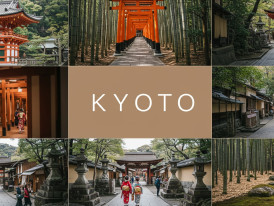
A montage showing the interconnected cultural elements of Kyoto
Reflecting on Two Days in Kyoto
What 2 Days in Kyoto Teaches
After walking these paths, sitting in temples, participating in cultural practices, and observing local life, what emerges isn't mastery but appreciation. 2 days in Kyoto provides a foundation for understanding rather than comprehensive knowledge, enough experience to recognize complexity beneath apparent simplicity.
The city teaches patience through garden design, attention through the tea ceremony, acceptance through seasonal awareness, and humility through encounters with traditions refined over centuries. These aren't uniquely Japanese lessons but universal practices expressed through particular cultural forms.
Is 2 days in Kyoto enough? The question shifts meaning after experience. Two days provides sufficient introduction to recognize what deserves deeper exploration, what connects to your interests, what challenges your assumptions. This recognition creates foundation for meaningful return visits rather than completion of cultural checkbox. The Kyoto experiences you choose during return visits will build upon foundational understanding developed during initial two-day introduction.
Planning Your Return
Most visitors leave Kyoto planning return visits. Two days reveal enough depth to recognize how much remains unexplored. 3 days in Kyoto might include district focus, spending full day in single neighborhood rather than crossing the city repeatedly. Week-long visits allow seasonal rhythm appreciation, craft workshop participation, language study integration.
Future visits might emphasize different aspects: architectural study, garden design philosophy, Buddhist practice, traditional craft learning, or contemporary art scene. Initial exposure helps identify personal interests for focused return exploration.
Carrying Kyoto Forward
The most valuable souvenirs from 2 days in Kyoto aren't purchased objects but internalized practices. Attention training from garden observation. Patience develops from tea ceremony participation. Appreciation enhancement from seasonal awareness. Cultural sensitivity from etiquette learning.
The bamboo forest environments, UNESCO World Heritage sites, and traditional streets of Kyoto Japan create comprehensive cultural education that extends far beyond single experiences. Visiting Kyoto provides foundation for understanding Japanese culture that enhances all future encounters with Japanese traditions, whether in Kyoto Japan or elsewhere.
Your 2 days in Kyoto end not with conclusion but with invitation to return, to explore deeper, to carry forward what you've learned about paying attention, honoring tradition, and finding beauty in carefully crafted details. The city waits, patient and generous, for whenever you're ready to continue the conversation.
Ready to plan your perfect day in Kyoto?
Start your experienceWhat if your day in Kyoto was planned by someone who knows it — and you?
City Unscripted matches you with a local host who creates a private experience based on your interests, not a set route.
Want to experience the real Kyoto with someone who lives there?
A fully private experience, planned and led by a local host who tailors the day to you
